Innovative Mobile Apps for Effective Calorie Counting
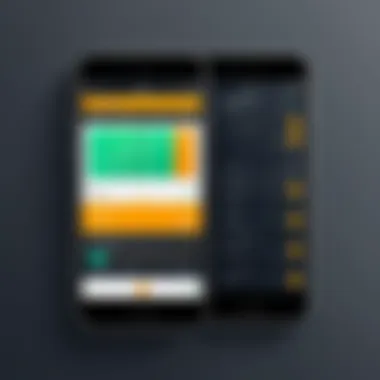
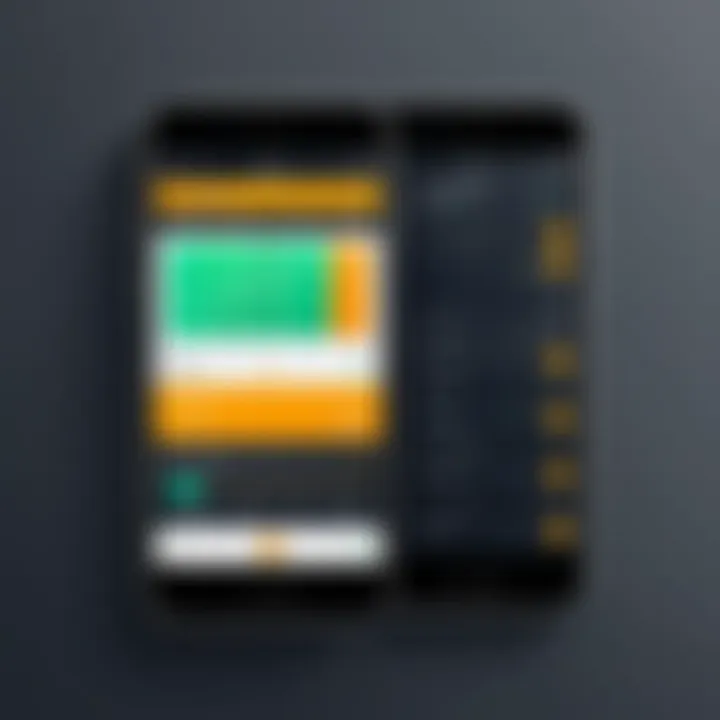
Intro
In a world where health and nutrition have become hot topics, calorie counting apps are capturing the spotlight. These mobile applications are designed not just to keep track of what we eat but to revolutionize how we think about our diets. It’s more than counting calories; it’s about cultivating a healthier lifestyle. With smartphones practically glued to our hands, these apps are the perfect companion for anyone wishing to keep tabs on their nutrition without the hassle of manual tracking.
The growing awareness of personal health management has led to a surge in the number of apps available for calorie counting. Each app presents its own unique features, capabilities, and challenges, making it essential for users to choose one that aligns with their individual goals and preferences. As we dive into the key features and specifications of these apps, we will also shine a light on how technology is reshaping dietary habits in today’s health-conscious society.
Key Features
When exploring calorie counting applications, several critical features stand out. Understanding these can significantly enhance one’s food tracking experience:
- User Interface: The design and layout play a substantial role. A clean, intuitive interface not only makes navigation simpler but also enhances user engagement. Prospective users should look for applications that prioritize easy usability.
- Food Database: An extensive food database is essential. The ability to easily find and log various foods—from home-cooked meals to restaurant offerings—can drastically improve the accuracy of calorie counting.
- Barcode Scanner: Some apps come equipped with a barcode scanner. This feature allows users to scan the packaging of food items, making the logging process nearly instantaneous.
- Customization and Personalization: The best apps offer a way to customize dietary preferences. Whether you are vegan, keto, or following another dietary trend, having options to input specific food preferences can be a game changer.
Design and Build Quality
The design aspect of these applications cannot be overstated. A well-built app that is visually appealing can motivate users to engage consistently. Additionally, the app's responsiveness and load times play a significant role in user experience. Slow apps can lead to frustration, causing users to abandon them. From sleek, colorful layouts to more muted, sophisticated designs, there’s something for every taste.
Display and Performance
Smooth interaction with the app's features is pivotal. Apps that lag during food logging or change between features can lead to user dissatisfaction. Hence, performance, which encompasses speed and reliability, should always be a priority when selecting a calorie counting app. Remember, the goal is to make healthy eating easier, not a chore.
Product Specifications
Before downloading just any app, it’s wise to understand what goes into its creation:
- Technical Specifications: Most modern calorie counting apps leverage state-of-the-art technology to provide real-time data and insights. This includes advanced algorithms that track caloric intake versus expenditure, thereby helping users analyze their eating patterns more effectively.
- Compatibility and Connectivity: Not all apps are created equal when it comes to compatibility. Users should check which devices the app supports and whether it integrates well with wearables or other fitness tracking devices. This connectivity can enhance the experience, allowing for a more holistic view of health metrics.
"Choosing the right calorie counting app isn’t just about functionality. It’s about aligning an app's features with personal health goals."
When selecting a mobile application for calorie counting, consider not only the features but also how you intend to use it. A well-rounded understanding of these innovative approaches is crucial for anyone looking to improve their nutritional awareness. As we venture further into the capabilities these apps offer, we will also address their limitations and the future of calorie tracking in our digital age.
Preamble to Calorie Counting Applications
In recent years, mobile applications dedicated to calorie counting have surged in popularity. This trend underscores a growing awareness around nutrition and personal health among a wide range of users. The convenience and accessibility of these digital tools can’t be overstated; they provide a unique approach to dietary management that taps into our obsession with data and personalization.
The implication of these applications goes beyond mere calorie tracking; they are reshaping the very landscape of how we think about food. By supporting users with detailed insights into their eating habits, these apps can significantly influence dietary choices and habits. Not just a gimmick, they offer a pathway to better nutrition through user-friendly interfaces, making complex nutritional data feel more approachable and less intimidating.
Definition and Purpose
Fundamentally, calorie counting applications serve one primary purpose: to assist users in monitoring their food intake. This process goes hand in hand with a broader awareness of nutritional values. Users can log their meals, shedding light on not just calories, but also macro and micro-nutrients. The intent is educational, empowering individuals to take charge of their eating patterns and overall health.
For many, these apps are akin to having a personal nutritionist in their pocket. They facilitate tracking by allowing input through various means, like barcode scanning and manual entries, which provide flexibility tailored to different user preferences. Their design emphasizes clarity, with many apps offering robust databases alongside synchronized activity tracking features, melding fitness with diet for a holistic approach.
Historical Context of Dietary Tracking
The journey of dietary tracking is quite fascinating. Of course, the concept isn’t new; people have been keeping food diaries for decades. Many might remember writing down every meal in a journal, reflecting the manual and therefore often tedious nature of tracking one’s diet before the digital age.
However, the advent of smartphones and mobile applications revolutionized this practice. Early diet tracking software often leaned heavily on databases that were restrictive and cumbersome by today's standards. With time, advancements in technology paved the way for apps like MyFitnessPal and Lose It! to rise to prominence by adopting more intuitive designs and capable databases. With a simple search, one can now pull up thousands of food items with detailed information at their fingertips.
The impact on users has been profound, making it infinitely easier to engage with one’s own dietary habits. By providing an accurate reflection of daily intakes and encouraging accountability, calorie counting apps have nurtured a culture that prioritizes health-conscious decisions. From the early days of paper notebooks to the sophisticated algorithms of today, it’s clear that the evolution of dietary tracking is a testament to our increasing fascination with data in everyday life.
How Calorie Counting Apps Work
In today's fast-paced lifestyle, where healthy eating often takes a backseat, calorie counting apps have cropped up as essential tools for those who want to keep their dietary habits in check. These applications are not just trend followers; they are foundations for users who aim to improve their well-being through informed food choices. By understanding how these apps operate, users can maximize their benefits while being aware of certain constraints.
Data Input Methods
When it comes to logging food intake, the methods available through calorie counting apps are quite diverse. Apps like MyFitnessPal allow users to log meals by either manually entering the food items or through barcode scanning. This feature is crucial, as it facilitates quick and easy entries. Moreover, some apps enable users to photograph their meals, using image recognition technology to identify food items and estimate their nutritional content. This can be particularly beneficial for those who may struggle with text-based entries.
For instance, if a user sits down to a hearty pasta dish, instead of fumbling with typing, they might snap a picture. The app can then analyze this image, serving up nutritional information right in their hands. It eliminates the guesswork and makes tracking more interactive – almost like having a personal dietitian in your pocket.
Nutritional Databases Utilized
A solid foundation for any calorie counting app lies in its nutritional database. The efficacy of the app largely hinges on the quality and comprehensiveness of its data sources. Many popular apps, like Cronometer or Lose It!, utilize robust databases populated by food manufacturers, USDA databases, and even user-generated data.
With the diversity of food options available today, accuracy becomes paramount. If a user selects a specific brand of cereal, the app should provide precise information about its caloric value and additional nutrients. Cheap substitutes here can lead to miscalculations and derail nutritional goals. Furthermore, regular updates to these databases are essential, as food products frequently change their recipes or nutritional content.
User Interface Design and Usability
User interface (UI) design is not merely a cosmetic affair; it’s the core of an app's usability. A visually appealing yet functional interface can significantly influence a users' experience. An effective UI ought to promote intuitive navigation and facilitate effortless data entry. If a user can easily find what they’re looking for and quickly log a meal, they are more likely to stick with the app in the long run.
Take, for example, the interface of Yazio. This app incorporates a clean layout with clearly defined sections, which makes it easy for users of all ages to engage. Features like progress bars, meal planners, and visual representations of nutritional intake are smart additions. Users can grasp their logging habits and make adjustments as needed. The goal should be to keep it engaging without overwhelming, balancing functionality with an enticing design.
"A well-designed app not only serves a purpose but also invites users in, making them feel in control of their health journey."
In essence, how these calorie counting apps work is a reflection of the evolving landscape of technology in personal health management. By emphasizing various input methods, leveraging robust databases, and honing in on user-friendly design, these apps continue to revolutionize the way individuals interact with their dietary choices.
Analyzing Popular Calorie Counting Applications
In an era where health-consciousness is at the forefront of many individuals' lives, analyzing popular calorie counting applications becomes crucial. These applications serve as pivotal tools for users striving to manage their weight, understand their eating habits, and make informed food choices. By dissecting the key players in this digital landscape, we can draw valuable insights into what makes these apps effective and how they adapt to the varied needs of their users.
Leading Apps in the Market
When it comes to calorie counting, a few applications have risen above the others, capturing the attention of both casual dieters and serious health enthusiasts. Among these, MyFitnessPal, Lose It!, and Yummly stand tall. Each varies dramatically in user experience, approach to nutritional education, and community engagement.
- MyFitnessPal: This app boasts a comprehensive database of foods and an easy-to-use interface, making it almost second nature for users to log their meals. The social aspect allows users to connect with others for motivation, creating a sense of community that is sometimes hard to find in solitary dieting efforts.
- Lose It!: This application stands out for its personalized weight loss plans. Utilizing data from users, it tailors its suggestions and reminds them of their progress, which can be a significant encouragement for staying on track.
- Yummly: While not strictly a calorie counting app, Yummly integrates recipe suggestions based on dietary preferences and nutritional insights, helping users formulate healthy meals that are also enjoyable.
Each of these applications provides vital functionality that enables users to better understand their dietary habits and make healthier choices.
Unique Features of Each Application
The uniqueness of these apps often lies in their specific features, which tailor them for different audiences. For example, MyFitnessPal offers an expansive barcode scanner for quick logging of packaged foods, making it a favorite among busy individuals. In contrast, Lose It! employs a gamification approach, rewarding users with prizes as they reach milestones, which can inject a bit of excitement into daily logging.
- MyFitnessPal:
- Lose It!:
- Yummly:
- Comprehensive food database
- Barcode scanning
- Community forums
- Personalized weight loss plans
- Gamification of goals
- Challenges with friends
- Integrates recipe suggestions
- Dietary preference filters
- Nutrition analysis per recipe
The individual strengths of each app reflect the varying needs of users, from community support to personalized guidance.
Comparative Analysis of User Reviews
Shifting gears, exploring user reviews reveals both the upsides and downsides of these applications. Frequently, users appreciate the intuitive design and extensive food databases. However, criticisms often arise regarding inaccuracies in nutritional information and the disconnect between the intended functionality and real-life application.
For instance, many MyFitnessPal users commend its rich resource library and the thriving community aspect; however, a significant number voice concerns about the accuracy of the logged nutritional data. Similarly, Lose It! receives praise for its personalization but faces criticism regarding its limitations on food tracking beyond simple categories.
"Ultimately, these apps offer a blend of benefits that can empower users, but it is essential to approach them with a critical eye."
Technical Aspects of Calorie Counting Applications
As we delve into the technical aspects of calorie counting applications, it becomes evident that these digital tools are not just simple calorie trackers—they are complex systems driven by cutting-edge technology. Their significance in the realm of dietary management rests in their ability to facilitate informed eating choices, guide users toward healthier habits, and adapt to individual nutritional needs. In this section, we will explore three crucial elements: the implementation of machine learning in nutritional tracking, the role of artificial intelligence in tailoring personalized recommendations, and the imperative concerns surrounding data privacy and user security.
Machine Learning in Nutritional Tracking
Machine learning in nutritional tracking represents a leap forward in how users interact with their diets. By analyzing vast datasets, these applications can recognize patterns, adapt algorithms, and eventually enhance user experiences. For instance, when a user logs their meals, the app learns from their choices over time. It begins to not just to record but predict—suggesting foods based on previous entries and nutritional requirements.
- Data Analysis: With algorithms at work, it's not just about calories anymore. Machine learning allows these apps to analyze what types of foods users tend to prefer, identifying trends that can lead to more precise suggestions. A user who often chooses high-protein foods may receive tailored meal suggestions with higher protein sources.
- Feedback Loops: The more a user interacts with the app, the better it can perform. This iterative process means that the app continuously improves, learning from user habits. It's like having a nutrition coach in your pocket, adapting in real-time.
- Enhanced User Experience: Overall, machine learning heightens the user experience by creating a more intuitive interface. This leads to higher user satisfaction and encourages continued use, which is essential for effective calorie counting.
Artificial Intelligence for Personalized Recommendations
Artificial intelligence takes personalization a notch higher in calorie counting apps. Unlike traditional methods that provide generic dietary advice, AI-powered applications assess individual health data to tailor recommendations specifically suited to each user.
- Custom Meal Plans: By analyzing user preferences, dietary restrictions, and health goals, AI can curate meal plans that resonate well with individual lifestyles. Someone aiming for weight loss may be suggesting one type of dish, while another focused on muscle gain might see entirely different options.
- Real-time Nutritional Adjustments: AI’s role extends beyond meal recommendations. When a user logs a specific food, the app can assess its fit within their daily intake. If a user is close to their pre-set carbohydrate limit, the app might suggest alternative foods when the next meal is logged.
- Ongoing Adaptation: Finally, the advantage of AI lies in its capability for growth. The more data it collects, the sharper its recommendations become. As users adopt new habits or change their fitness goals, AI updates its suggestions, ensuring they remain relevant over time.
Data Privacy and User Security
While embracing technology, the discussion of data privacy and security cannot be overlooked. As calorie counting apps collect sensitive user data, including dietary habits and health information, ensuring robust security measures becomes crucial.
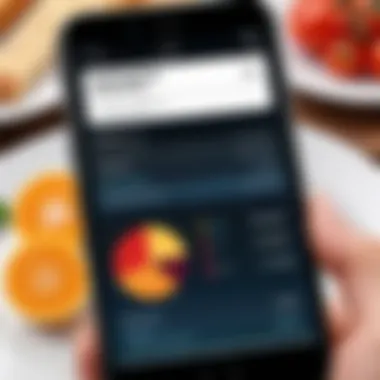
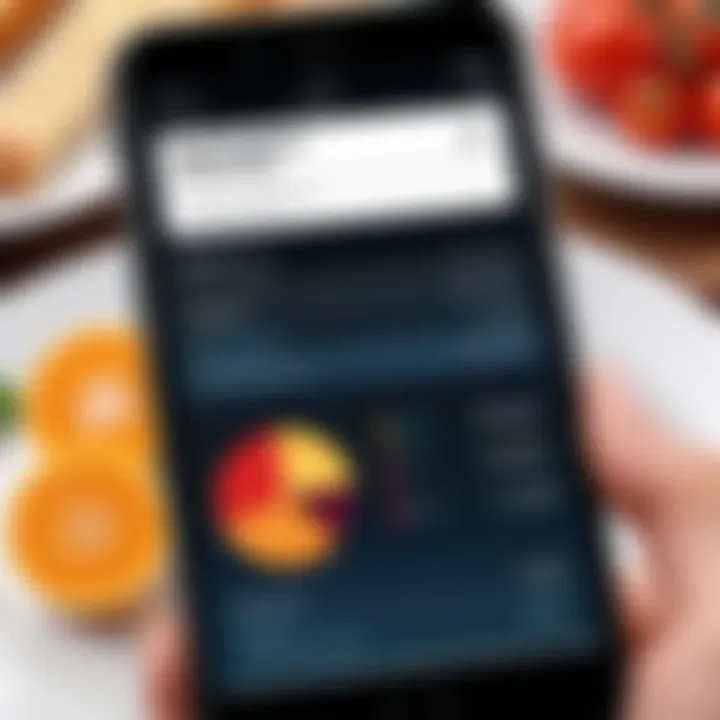
"In the era of digital health, user trust hinges on stringent data protection protocols."
- User Consent: Apps must prioritize transparency. Users should always be informed about what data is collected and how it will be used. Clear consent mechanisms are essential, allowing individuals to control their information.
- Encryption Measures: Implementing encryption for stored data helps mitigate risks of breaches. Reliable apps utilize state-of-the-art technologies to safeguard user details from unauthorized access.
- Regular Audits: Continuous monitoring and auditing of app security protocols ensure they remain resilient against emerging threats. Companies must be proactive, addressing potential vulnerabilities before they can be exploited.
Psychological Impacts of Calorie Counting
Calorie counting is not just a numbers game; it significantly influences how individuals view food and their relationship with their bodies. As we embrace technology more, the psychological aspects of tracking calorie intake through mobile applications gain exceptional importance. Understanding this dynamic helps users navigate the fine line between healthy habits and detrimental mindsets. The benefits, along with the challenges presented by calorie counting, shape our attitudes toward food and self-image.
Behavioral Changes Induced by Tracking
When users begin to monitor their calorie intake, detectable behavioral changes often emerge. These can range from increased mindfulness regarding food choices to more problematic patterns.
For instance, many individuals report an uptick in awareness - becoming attuned to what and how much they consume. This heightened insight can lead to
- Improved food selection, as users may prioritize healthier options.
- Enhanced portion control, allowing for greater balance in meals.
- Development of meal planning skills by aligning menus with nutritional information.
However, it is crucial to highlight that not all changes are positive. Some users develop an obsessive mindset, where tracking becomes more about perfection than health. This can lead to
- Rigid dieting practices, which can be unsustainable over time.
- Restricting vital food groups labeled as 'bad' instead of considering overall dietary quality.
- Loss of enjoyment in meals, viewing food solely as numbers rather than nourishment.
These contrasts illustrate the dual-edged nature of mobile applications for calorie counting. It’s essential to promote balance while also encouraging responsible usage of these tools.
"Calorie tracking can become a path toward better health, but it shouldn’t overshadow the joy of eating."
Potential for Over-Restriction and Anxiety
The use of calorie counting applications brings with it the risk of over-restriction. This concept surfaces when users become so absorbed in monitoring calories that it leads to a negative mental state.
Feeling pressured to meet calorie quotas can result in anxiety, where the individual constantly evaluates their choices. Some common outcomes include:
- Increased stress levels surrounding meals and food choices.
- Avoiding social situations involving food due to fear of losing track or overindulging.
- Heightened preoccupation with achieving caloric goals, leading to guilt or shame when perceived failures arise.
This mental strain not only affects an individual's daily life but can also lead to serious implications for mental health. Users might find themselves caught in a web of diet culture, pushing them to adopt extreme measures to meet their calorie goals.
Benefits of Using Calorie Counting Apps
The suite of advantages that calorie counting applications present is multi-faceted, fundamentally changing the way individuals approach dietary habits and health management. As technology trends towards connectivity and personalization, these mobile apps emerge at the forefront, assisting users in navigating their unique nutritional journeys. Not merely tools for counting calories, they stand as platforms for education, empowerment, and healthier lifestyle choices.
Promoting Healthier Eating Habits
Calorie counting apps anchor themselves as pivotal guides in promoting healthier eating habits. These applications convert sometimes overwhelming dietary information into manageable insights. By enabling users to log their food, they can visually grasp how their choices stack up calorie-wise as well as nutritionally.
Moreover, several apps provide meal suggestions based on individual dietary restrictions or preferences. This can nudge users toward incorporating more fruits and vegetables, and lean proteins, effectively replacing processed snacks with wholesome alternatives. As users become acutely aware of their food intake, they slowly shift their mindset towards a more positive relationship with food.
For instance, a person using the app MyFitnessPal may set a goal to increase their fiber intake. When logging meals, they can easily compare fiber content across different food options, hence making informed substitutions. Slowly but surely, this self-awareness breeds more intentional meal planning.
Facilitating Weight Management Goals
Weight management goals can prove daunting; however, calorie counting apps help simplify this terrain. Users who engage with these applications can track their calorie intake against their energy expenditure, allowing for a clearer understanding of how different foods impact their overall weight objectives.
For people looking to shed pounds, the app might serve as a tangible reminder when they think about reaching for that extra slice of pizza. The built-in ability to set personalized goals becomes a cornerstone in maintaining focus. Users might notice patterns—like leaning towards more high-calorie foods on weekends—and recalibrate their habits accordingly.
In addition, features like progress tracking keep individuals accountable. If someone uses Lose It! to plot their journey, they can see precisely how many pounds they’ve shed over the weeks or months, which boosts motivation. Connecting this progress to data can further validate their efforts, demonstrating how small changes lead to significant impacts over time.
Enhancing Nutritional Education
Beyond just counting calories, these apps assume the role of educators in personal nutrition. As users engage with their caloric intake, they naturally become more aware of various nutrients, food categories, and dietary guidelines.
Apps like Cronometer not only allow users to input their meals but also provide detailed nutrient breakdowns including vitamins and minerals. This information fosters a more profound understanding of their nutritional needs, encouraging users to seek balance rather than obsess over calorie deficits.
Furthermore, the integration of community forums within some apps can amplify this learning experience. Users can share recipes, tips, and insights, creating a supportive environment for one another. This collaboration and knowledge-sharing can significantly enhance users' nutritional literacy.
It’s essential to view calorie counting apps not just as counting measures but also as tools that pave the way for healthier lifestyles and sound nutritional decisions.

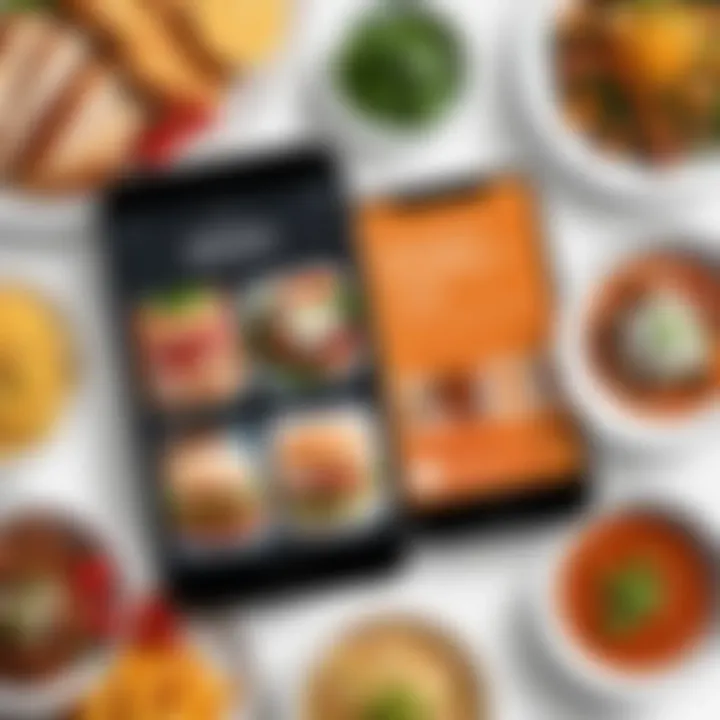
In summary, while calorie counting apps are often looked at solely for their tracking abilities, their role extends into promoting balanced eating, facilitating weight management, and enhancing educational experiences surrounding nutrition. Embracing these tools can empower individuals to take charge of their health, ultimately leading to a more informed food environment.
Limitations and Challenges of Calorie Counting Applications
While calorie counting applications offer numerous benefits, acknowledging their limitations and challenges is just as crucial. The road to achieving better dietary habits through these tools isn’t always smooth. Many users may find themselves grappling with various issues that can hinder their dietary tracking journey, making it essential to explore these hurdles comprehensively.
User Engagement and Retention Issues
A common problem users face when adopting calorie counting apps is maintaining consistent engagement. Sure, the novelty of a new tool can be exciting. However, that initial enthusiasm tends to wear off faster than a kid's ice cream cone on a hot summer day. Different factors contribute to this struggle:
- Time Commitment: Regularly logging food intake requires a time investment that some users might not be prepared to make. Overwhelmed by busy lives, users often find it easy to let tracking slide.
- Simplicity vs. Complexity: Some apps are either too overwhelming with features or too simplistic, leaving users frustrated. A complicated interface can deter users from delving into tracking, while overly simplified apps often lack the depth needed for serious tracking.
- Motivational Drops: Even the most advanced features can’t guarantee ongoing motivation. When users don’t see immediate results—be it weight loss or improved energy levels—they might lose interest and abandon the app altogether.
For these reasons, developers need to focus on creating engaging user experiences that keep users coming back for more, ideally through features that foster a sense of community or gamified elements that make calorie counting feel less like a chore.
Accuracy of Nutritional Information
The accuracy of the nutritional data provided by applications is another significant concern for many users. It's no secret that not all food databases are created equal. Depending on how applications source their data, inaccuracies may arise, leading to potential pitfalls:
- Database Limitations: Many apps rely on crowdsourced content, which can be prone to errors. Users reporting incorrect information can lead to a cascade of misinformation.
- Variability of Food Preparation: The same dish can have vastly different calorie counts depending on how it's cooked or the specific portions used. This variability complicates accurate tracking, as home-cooked meals often defy standard nutritional guidelines.
- Hidden Ingredients: Many people overlook how much those little extras—like sauces, dressings, or cooking oils—can add to their daily intake. Without precise tracking, users may inadvertently underestimate their calorie consumption.
These inaccuracies can undermine users’ confidence in their tracking efforts and lead to misguided dietary decisions. Thus, it’s essential for app developers to ensure their databases are regularly updated and verified for accuracy.
Technological Accessibility Concerns
Despite the rise in smartphone usage, technological accessibility remains a significant barrier for some potential users of calorie counting apps. Not everyone has the latest gadgets at their fingertips:
- Smartphone Ownership Disparity: There are still demographic groups who either do not own a smartphone or have access to only basic models that struggle to run complex apps smoothly.
- Internet Connectivity Issues: Regular updates and database retrieval require stable internet connectivity, which isn’t always available to everyone. Some users in rural areas or developing regions may face challenges connecting or maintaining that connection.
- Learning Curve for Technology: Even with the right devices, some individuals may struggle with the technical know-how to navigate an app effectively. A user-friendly design is essential, but the learning curve can still deter potential users.
To address these challenges, app developers must focus on creating applications that are not only sophisticated in features but also accessible and inclusive, ensuring that everyone has an equal opportunity to track their nutritional intake effectively.
"Understanding the limitations of calorie counting applications is just as vital as leveraging their benefits; it sets realistic expectations and paves the way for better dietary choices."
In essence, while calorie counting applications bring a wealth of functionality to the table, recognizing and addressing their limitations can help enhance user experience and usher in a broader acceptance and adoption of these digital tools.
The Future of Calorie Counting Technology
The realm of calorie counting is on the brink of transformation, shaped by technological advancements and evolving consumer expectations. As mobile applications continue to gain traction among health-conscious individuals, understanding the future landscape of these tools becomes essential. The next few years promise to bring innovative features and increased integration with other technologies, enhancing the user experience and making calorie counting more efficient.
A significant aspect of this evolution lies in the utilization of adaptive algorithms and real-time analytics. These advancements will not only improve the accuracy of calorie counts but also customize suggestions based on individual user behavior and preferences. As these technologies evolve, users might find personalized diet plans generated with precision, based on past meals and caloric intakes. This idea leads us to explore two emergent trends that could redefine how we view nutritional applications.
Emerging Trends in Nutritional Apps
Today's nutritional apps are not just counting calories; they are evolving into comprehensive platforms offering richer functionalities. For instance, we could see features that integrate augmented reality for food recognition. Imagine lifting your phone to scan a meal, and it automatically calculates calories and nutritional content—it’s like magic!
Another trend that stands out is the emphasis on community and social connections. Apps may offer places for users to share their meals, challenges, and successes. This could foster motivation and accountability among users, pushing the concept of calorie counting beyond mere numbers.
Also, we may observe more collaborations between developers and nutrition experts. These partnerships will generate scientifically-backed recommendations that can adapt to dietary requirements—think gluten-free, keto, or vegan options tailored precisely for the user.
Integration with Wearable Technology
Wearable technology is changing the game in personal health monitoring, and the synergy between calories counting applications and wearables is something to watch closely. Devices like smartwatches and fitness trackers could work hand in hand with mobile apps, providing a seamless flow of data. This collaboration will enable users to monitor their calorie intake alongside their physical activity, leading to a more holistic view of their health.
For example, if a user knows they burned a certain number of calories during a workout, they might feel more empowered to enjoy a well-deserved snack without feeling guilty—a healthier relationship with food in practice.
Furthermore, there will likely be an emphasis on real-time data feedback. Analyzing heart rate and calories burned during workouts can allow the app to prompt users with real-time nutrition tips or reminders about hydration, making eating choices more intuitive and situation-specific.
Culmination and Final Thoughts
In examining the multifaceted world of calorie counting applications, the significance of these tools becomes increasingly evident. They are not just applications; instead, they serve as critical companions to health-conscious individuals navigating the complexities of dietary management. Through various features—ranging from comprehensive nutritional databases to personalized dietary recommendations driven by artificial intelligence—these applications empower users to take charge of their eating habits.
Summarizing Key Insights
Reflecting on the insights gathered throughout this article, several key points emerge that underscore the transformative potential of calorie counting apps:
- Accessibility: The proliferation of mobile applications has made nutritional tracking a possibility for nearly everyone. With smartphones in the hands of billions, the barrier to entry has dramatically lowered.
- Personalization: These apps adapt to individual user needs, taking into account dietary preferences, restrictions, and health goals. Features like bar code scanning and nutritional logging make it feasible for users to customize their experiences.
- Community and Support: Many applications offer forums and social features, fostering a sense of community amongst users. This supports accountability and motivation, crucial elements in any dietary journey.
- Data-Driven Insights: Leveraging machine learning, apps provide users with insights into their eating patterns and suggest potential modifications, making the process of improving dietary habits both engaging and educational.
Implications for Diet Management Moving Forward
The implications for the future of diet management while using calorie counting applications are promising yet complex. As technology continues to evolve, several considerations will shape how users engage with these tools:
- Continued Integration: The synergy between calorie counting apps and wearable devices like smartwatches is expected to enhance user experience, allowing for seamless activity and diet tracking. Users will benefit from a holistic view of their health data, aiding in more informed lifestyle choices.
- Focus on Mental Wellness: As awareness grows around the psychological impacts of stringent calorie tracking, future applications will likely place more emphasis on balanced approaches over strict adherence. Incorporating features that promote mental well-being will be paramount.
- Advancements in AI: The use of artificial intelligence promises further advancements in personalized dietary recommendations. As algorithms become more sophisticated, users can expect increasingly tailored suggestions that align more closely with their unique needs.
- Education and Empowerment: Moving forward, the importance of educating users about proper nutrition and healthy eating habits cannot be overstated. Apps that encourage users to learn rather than merely track will create a more informed and empowered user base.

